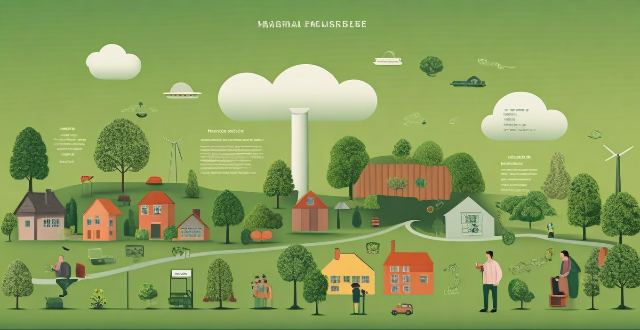Carbon sequestration helps to reduce greenhouse gas emissions and stabilize climate conditions, leading to improved air quality and public health. It also promotes sustainable development by supporting renewable energy sources and creating green infrastructure. Additionally, carbon sequestration creates job opportunities and stimulates innovation in various industries. In the long term, it preserves biodiversity and prevents extreme weather events caused by climate change.

The Benefits of Carbon Sequestration in Reducing Global Warming
Carbon sequestration is the process of capturing and storing carbon dioxide (CO2), a greenhouse gas that contributes to global warming, from the atmosphere. This can be done through various methods such as afforestation, reforestation, and carbon capture and storage (CCS) technologies. The benefits of carbon sequestration in reducing global warming are numerous and include:
1. Mitigating Climate Change
- Reducing Greenhouse Gas Emissions: By capturing and storing CO2, carbon sequestration helps to reduce the amount of greenhouse gases in the atmosphere, which in turn slows down the rate of global warming.
- Stabilizing Climate Conditions: As less CO2 is released into the atmosphere, the Earth's temperature will stabilize, preventing further damage to the environment and ecosystems.
2. Enhancing Air Quality
- Improving Public Health: Carbon sequestration reduces air pollution by removing harmful substances like CO2, leading to improved respiratory health for people living near industrial areas or heavily trafficked roads.
- Protecting Ecosystems: Cleaner air also benefits plants and animals, as they are not exposed to harmful pollutants that can cause illness or death.
3. Promoting Sustainable Development
- Supporting Renewable Energy Sources: Carbon sequestration can be used in conjunction with renewable energy sources like wind and solar power, making them more efficient and effective at reducing greenhouse gas emissions.
- Encouraging Green Infrastructure: Afforestation and reforestation projects involved in carbon sequestration help to create green spaces, which provide habitats for wildlife, improve water quality, and enhance scenic beauty.
4. Economic Benefits
- Creating Job Opportunities: The implementation of carbon sequestration projects creates jobs in industries such as forestry, agriculture, and construction.
- Stimulating Innovation: The development of new technologies for carbon capture and storage encourages research and innovation, leading to advancements in other fields as well.
5. Long-Term Environmental Impact
- Preserving Biodiversity: Carbon sequestration helps to preserve natural habitats and protect endangered species by reducing the impact of climate change on their environments.
- Preventing Extreme Weather Events: Reducing greenhouse gas emissions through carbon sequestration helps to minimize the occurrence of extreme weather events like hurricanes, floods, and droughts, which can have devastating effects on communities and ecosystems.
In conclusion, carbon sequestration plays a crucial role in mitigating global warming by reducing greenhouse gas emissions, improving air quality, promoting sustainable development, providing economic benefits, and having long-term positive environmental impacts.